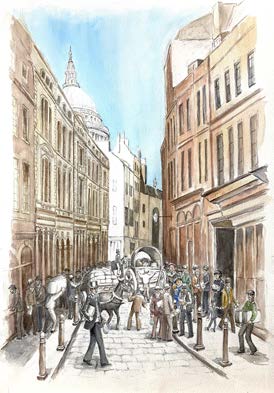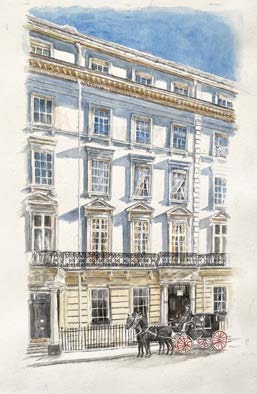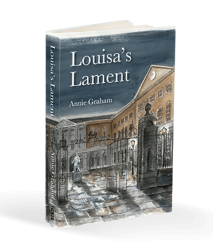Working with June Schneider, the artist, much research went into creating the illustrations for the book and its cover. After years of reading and researching, I had built up vivid pictures in my mind of what it was like to live and work in London in the late 19th century. We spent many hours studying archive pictures and discussing how to convey the key scenes from the story to give a feeling of the places in Louisa’s time.
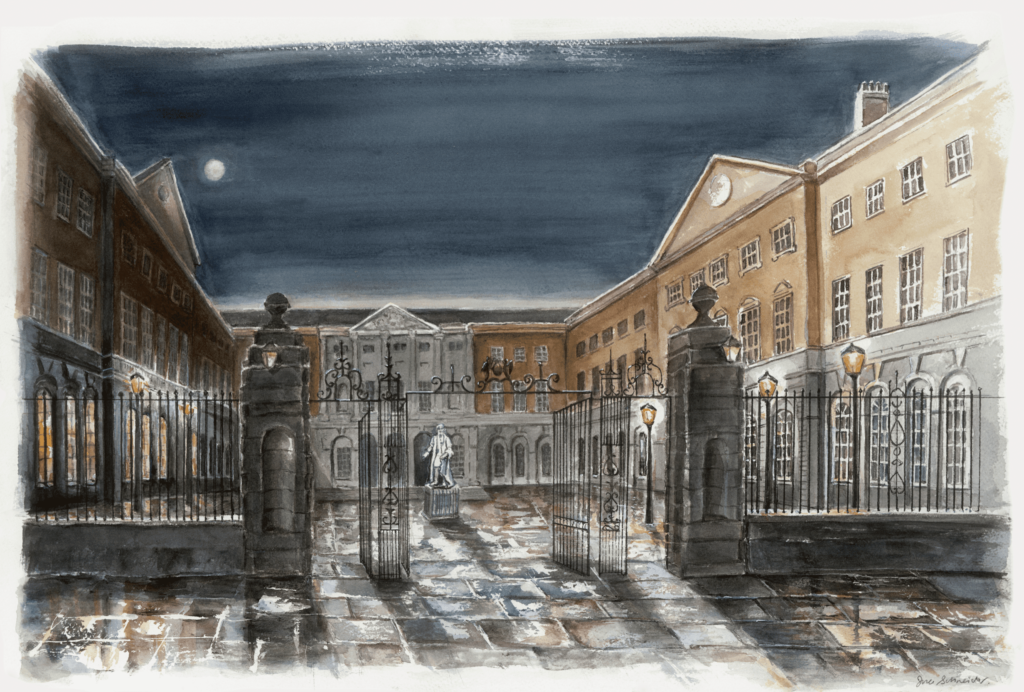
Guy's Hospital
I know Guy’s campus very well as my teaching rooms for many years were in Hunt’s House. Every week in term time, I crossed over the front quad of Guy’s, through the colonnade to the park at the rear, taking the same steps as the story’s key players must have done. June visited Guy’s and took photographs to get the necessary perspectives and we added further details from our research in picture libraries to create a cache that informed the creation of the illustrations in the book.
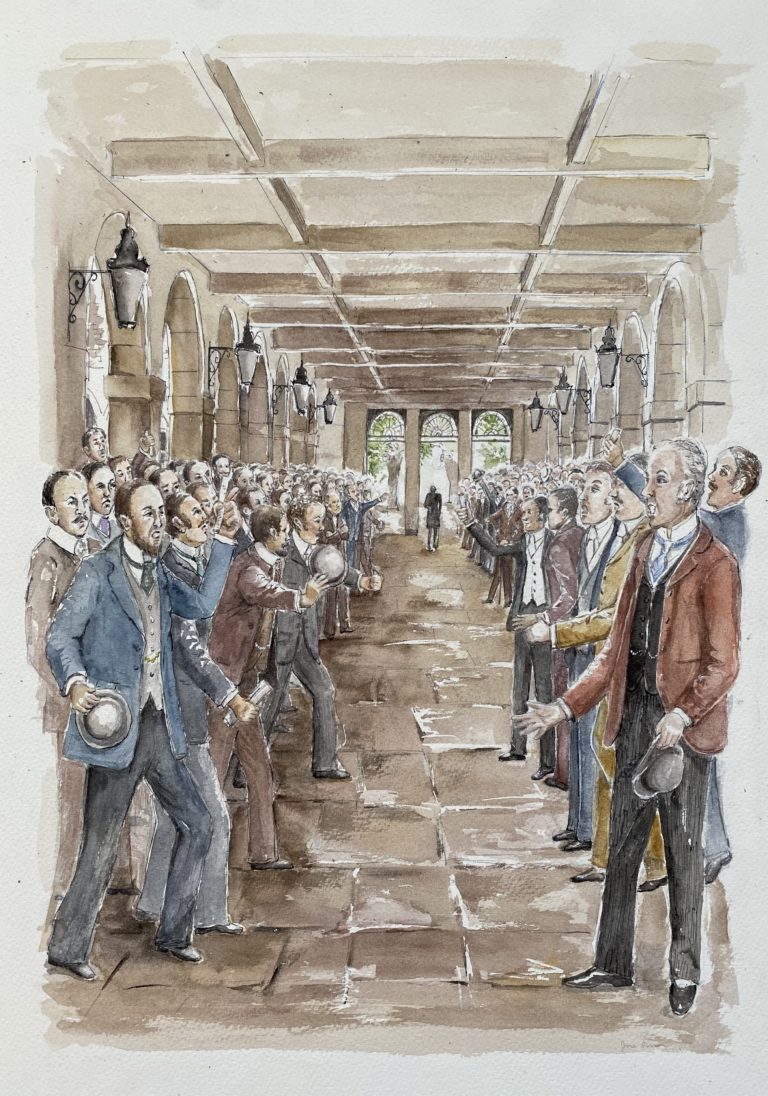
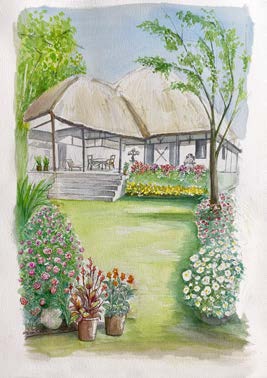
Hector Cameron’s book, Mr Guy’s Hospital 1726-1948, was a rich source of pictures in developing the cover illustration and the frontispieces for Parts I and II which are set in Guy’s. Similar efforts went into site visits to Brook and Grosvenor Streets, where the senior medical staff lived, which informed the illustration for the frontispiece to Part III. And walks around the City to St Paul’s and its churchyard, which was Paternoster Row at the time of Louisa’s story, and the Old Bailey, informed the illustrations for the frontispieces to Parts IV and V.
Part VI is set in northeast India in one of the hill stations popular with the British at the time around Ranchi. I travelled to Sri Lanka many years ago and stayed in such a station at Nuwara Eliya and the memory of it, and the pictures from Margaret Macmillan’s Women of the Raj, informed the illustration for the frontispiece for Part VI.
Costume & Carriage
Wikipedia offers many pictures at the touch of a button. It is a great resource, and we drew on its catalogues constantly, especially for costume and carriage details. There are other comprehensive sources which also need to be acknowledged: the archives of Guy’s Hospital; the British Library; the National Gallery; and Alamy’s and Getty’s picture libraries, are all excellent.
Finally, Charles Booth’s London’s Poverty Maps gives one of the best collection of maps, observation notes and photographs of the time. I drew on this publication constantly when thinking about the nurses’ lives in Southwalk and its slums, which kept Guy’s busy every hour of every day, and, in contrast, the West End, with its delightful gardens and rich mercantile districts, where the medical staff lived very different lives.
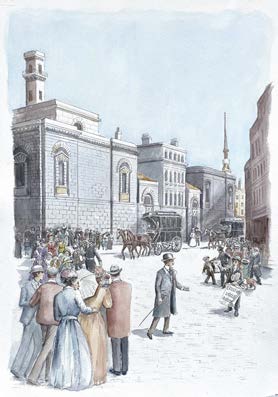
If you would like to ask questions about these illustrations or to discuss the issues raised in Louisa’s Lament comment below and start a discussion.
Please note that these images are subject to copyright and must not be republished elsewhere without written permission from Pat Oakley Publishing.

